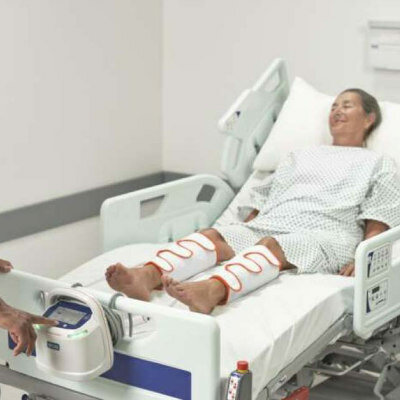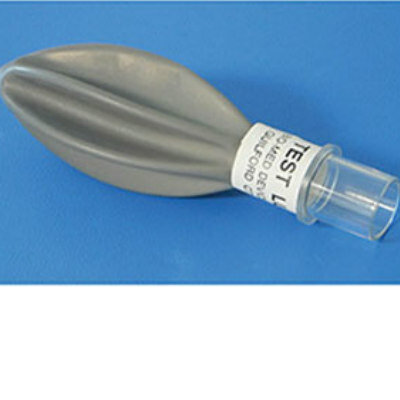ThermoGenesis’ Breakthrough Lateral Flow Immunoassay Test Reader to Help Track Antibody Response of COVID-19 Vaccine Recipients
|
By HospiMedica International staff writers Posted on 21 Oct 2020 |

Illustration
A new breakthrough lateral flow immunoassay test reader technology aims to facilitate the widespread use of inexpensive, mass-produced, FDA-authorized SARS-CoV-2 lateral flow immunoassay (LFIA) tests to distinguish seropositive members of populations of concern (individuals who already have SARS-CoV-2 antibodies), who might be a lower priority for the earliest immunization.
The ThermoGenesis Reader from ThermoGenesis Holdings, Inc. (Rancho Cordova, CA, USA) has been specifically designed to facilitate the efficient utilization of COVID-19 vaccine stocks in the US as we enter 'The Vaccine Era' of COVID-19 response. According to the Centers for Disease Control and Prevention (CDC), only 15 million doses of COVID-19 vaccine might be available three months after the first vaccine is approved. ThermoGenesis has designed its new reader technology in anticipation of the potential need for a 'seronegatives first' triage strategy while vaccine supplies are limited. Seronegative members of the populations of concern (individuals altogether lacking SARS-CoV-2 antibodies) could be prioritized. ThermoGenesis Reader will also enable the tracking of vaccine recipients' antibody response over time, both to presumptively confirm immune status and to determine when booster immunizations may be required by individuals whose initial vaccine responses are waning.
ThermoGenesis plans to complete current beta testing of its new reader and enter into production in December, in time for the anticipated approval of one or more vaccines around the end of this year. The company has also received notification from the US Patent and Trademark Office (USPTO) of its intent to issue a patent for the company's new breakthrough lateral flow immunoassay test reader technology.
"We have consulted with leading public health experts from industry, government and academia who have advised us that US Food and Drug Administration (FDA) authorization of the first COVID-19 vaccines won't be the beginning of the end of this pandemic, but rather the end of the beginning," said Chris Xu, Ph.D., Chief Executive Officer of ThermoGenesis. "The challenge we are addressing comes in anticipation of an initially limited vaccine supply that will be administered on a prioritized basis to only a small fraction of the population. Our innovative technology, the ThermoGenesis Reader, is a robust, inexpensive, widely deployable, easy-to-use solution that will enable the tracking of vaccine recipients' antibody response over time, both to presumptively confirm immune status and to determine when booster immunizations may be required by individuals whose initial vaccine responses are waning. Lateral flow immunoassays are the fastest, least expensive, and most readily mass-produced serological tests for the kind of high-volume testing this will require, and the portable precision of the ThermoGenesis Reader will unleash LFIA's power to help carry us through to the ultimate eradication of this virus through an optimally efficient immunization strategy."
Related Links:
ThermoGenesis Holdings, Inc.
The ThermoGenesis Reader from ThermoGenesis Holdings, Inc. (Rancho Cordova, CA, USA) has been specifically designed to facilitate the efficient utilization of COVID-19 vaccine stocks in the US as we enter 'The Vaccine Era' of COVID-19 response. According to the Centers for Disease Control and Prevention (CDC), only 15 million doses of COVID-19 vaccine might be available three months after the first vaccine is approved. ThermoGenesis has designed its new reader technology in anticipation of the potential need for a 'seronegatives first' triage strategy while vaccine supplies are limited. Seronegative members of the populations of concern (individuals altogether lacking SARS-CoV-2 antibodies) could be prioritized. ThermoGenesis Reader will also enable the tracking of vaccine recipients' antibody response over time, both to presumptively confirm immune status and to determine when booster immunizations may be required by individuals whose initial vaccine responses are waning.
ThermoGenesis plans to complete current beta testing of its new reader and enter into production in December, in time for the anticipated approval of one or more vaccines around the end of this year. The company has also received notification from the US Patent and Trademark Office (USPTO) of its intent to issue a patent for the company's new breakthrough lateral flow immunoassay test reader technology.
"We have consulted with leading public health experts from industry, government and academia who have advised us that US Food and Drug Administration (FDA) authorization of the first COVID-19 vaccines won't be the beginning of the end of this pandemic, but rather the end of the beginning," said Chris Xu, Ph.D., Chief Executive Officer of ThermoGenesis. "The challenge we are addressing comes in anticipation of an initially limited vaccine supply that will be administered on a prioritized basis to only a small fraction of the population. Our innovative technology, the ThermoGenesis Reader, is a robust, inexpensive, widely deployable, easy-to-use solution that will enable the tracking of vaccine recipients' antibody response over time, both to presumptively confirm immune status and to determine when booster immunizations may be required by individuals whose initial vaccine responses are waning. Lateral flow immunoassays are the fastest, least expensive, and most readily mass-produced serological tests for the kind of high-volume testing this will require, and the portable precision of the ThermoGenesis Reader will unleash LFIA's power to help carry us through to the ultimate eradication of this virus through an optimally efficient immunization strategy."
Related Links:
ThermoGenesis Holdings, Inc.
Latest COVID-19 News
- Low-Cost System Detects SARS-CoV-2 Virus in Hospital Air Using High-Tech Bubbles
- World's First Inhalable COVID-19 Vaccine Approved in China
- COVID-19 Vaccine Patch Fights SARS-CoV-2 Variants Better than Needles
- Blood Viscosity Testing Can Predict Risk of Death in Hospitalized COVID-19 Patients
- ‘Covid Computer’ Uses AI to Detect COVID-19 from Chest CT Scans
- MRI Lung-Imaging Technique Shows Cause of Long-COVID Symptoms
- Chest CT Scans of COVID-19 Patients Could Help Distinguish Between SARS-CoV-2 Variants
- Specialized MRI Detects Lung Abnormalities in Non-Hospitalized Long COVID Patients
- AI Algorithm Identifies Hospitalized Patients at Highest Risk of Dying From COVID-19
- Sweat Sensor Detects Key Biomarkers That Provide Early Warning of COVID-19 and Flu
- Study Assesses Impact of COVID-19 on Ventilation/Perfusion Scintigraphy
- CT Imaging Study Finds Vaccination Reduces Risk of COVID-19 Associated Pulmonary Embolism
- Third Day in Hospital a ‘Tipping Point’ in Severity of COVID-19 Pneumonia
- Longer Interval Between COVID-19 Vaccines Generates Up to Nine Times as Many Antibodies
- AI Model for Monitoring COVID-19 Predicts Mortality Within First 30 Days of Admission
- AI Predicts COVID Prognosis at Near-Expert Level Based Off CT Scans
Channels
Critical Care
view channel
CPR Guidelines Updated for Pediatric and Neonatal Emergency Care and Resuscitation
Cardiac arrest in infants and children remains a leading cause of pediatric emergencies, with more than 7,000 out-of-hospital and 20,000 in-hospital cardiac arrests occurring annually in the United States.... Read more
Ingestible Capsule Monitors Intestinal Inflammation
Acute mesenteric ischemia—a life-threatening condition caused by blocked blood flow to the intestines—remains difficult to diagnose early because its symptoms often mimic common digestive problems.... Read more
Wireless Implantable Sensor Enables Continuous Endoleak Monitoring
Endovascular aneurysm repair (EVAR) is a life-saving, minimally invasive treatment for abdominal aortic aneurysms—balloon-like bulges in the aorta that can rupture with fatal consequences.... Read more
Wearable Patch for Early Skin Cancer Detection to Reduce Unnecessary Biopsies
Skin cancer remains one of the most dangerous and common cancers worldwide, with early detection crucial for improving survival rates. Traditional diagnostic methods—visual inspections, imaging, and biopsies—can... Read moreSurgical Techniques
view channel
Robotic Assistant Delivers Ultra-Precision Injections with Rapid Setup Times
Age-related macular degeneration (AMD) is a leading cause of blindness worldwide, affecting nearly 200 million people, a figure expected to rise to 280 million by 2040. Current treatment involves doctors... Read more
Minimally Invasive Endoscopic Surgery Improves Severe Stroke Outcomes
Intracerebral hemorrhage, a type of stroke caused by bleeding deep within the brain, remains one of the most challenging neurological emergencies to treat. Accounting for about 15% of all strokes, it carries... Read morePatient Care
view channel
Revolutionary Automatic IV-Line Flushing Device to Enhance Infusion Care
More than 80% of in-hospital patients receive intravenous (IV) therapy. Every dose of IV medicine delivered in a small volume (<250 mL) infusion bag should be followed by subsequent flushing to ensure... Read more
VR Training Tool Combats Contamination of Portable Medical Equipment
Healthcare-associated infections (HAIs) impact one in every 31 patients, cause nearly 100,000 deaths each year, and cost USD 28.4 billion in direct medical expenses. Notably, up to 75% of these infections... Read more
Portable Biosensor Platform to Reduce Hospital-Acquired Infections
Approximately 4 million patients in the European Union acquire healthcare-associated infections (HAIs) or nosocomial infections each year, with around 37,000 deaths directly resulting from these infections,... Read moreFirst-Of-Its-Kind Portable Germicidal Light Technology Disinfects High-Touch Clinical Surfaces in Seconds
Reducing healthcare-acquired infections (HAIs) remains a pressing issue within global healthcare systems. In the United States alone, 1.7 million patients contract HAIs annually, leading to approximately... Read moreHealth IT
view channel
Printable Molecule-Selective Nanoparticles Enable Mass Production of Wearable Biosensors
The future of medicine is likely to focus on the personalization of healthcare—understanding exactly what an individual requires and delivering the appropriate combination of nutrients, metabolites, and... Read moreBusiness
view channel
Philips and Masimo Partner to Advance Patient Monitoring Measurement Technologies
Royal Philips (Amsterdam, Netherlands) and Masimo (Irvine, California, USA) have renewed their multi-year strategic collaboration, combining Philips’ expertise in patient monitoring with Masimo’s noninvasive... Read more
B. Braun Acquires Digital Microsurgery Company True Digital Surgery
The high-end microsurgery market in neurosurgery, spine, and ENT is undergoing a significant transformation. Traditional analog microscopes are giving way to digital exoscopes, which provide improved visualization,... Read more
CMEF 2025 to Promote Holistic and High-Quality Development of Medical and Health Industry
The 92nd China International Medical Equipment Fair (CMEF 2025) Autumn Exhibition is scheduled to be held from September 26 to 29 at the China Import and Export Fair Complex (Canton Fair Complex) in Guangzhou.... Read more















